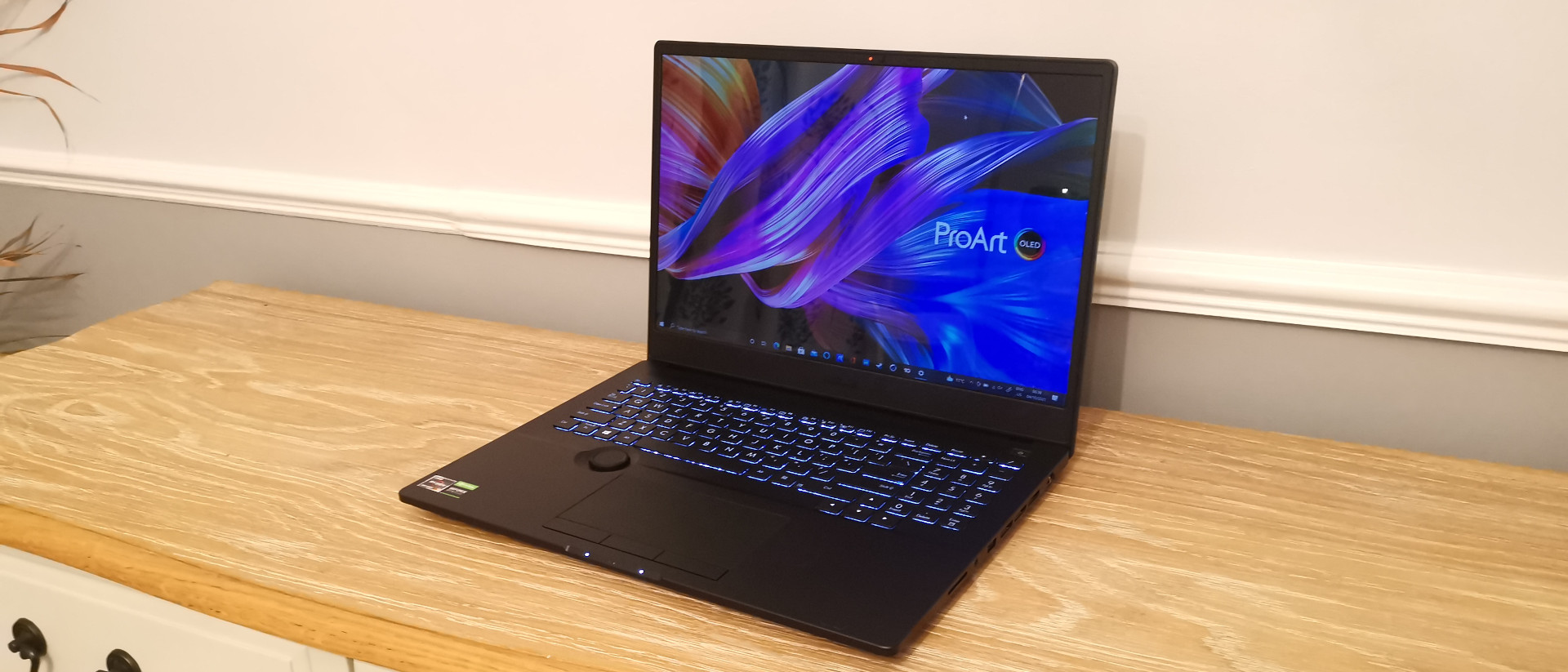Our Verdict
The Asus ProArt Studiobook 16 OLED is one of the best portable workstations for creative professionals, breaking away from the boring, traditional designs to provide genuinely useful and innovative solutions to streamline your experience using the device.
For
- 16-inch 4K OLED display
- Incredibly powerful components
- Unique Asus Dial for use in Adobe apps
- Great variety of ports
Against
- No included stylus
Why you can trust Creative Bloq
The new Asus ProArt Studiobook 16 OLED might look quirky at first glance, but every design choice has been meticulously thought out to create the ultimate portable workstation for creatives.
Asus proves itself frequently to be very capable of creative devices that serve a target market well, from its Republic of Gamers (abbreviated to ROG) brand for luxury gaming devices, to its VivoBook range of laptops that are best optimised for graphically demanding creative applications. The ProArt Studiobook has had previous iterations, but this new OLED flavoured beast is in a league of its own.
The Asus ProArt Studiobook 16 OLED hasn't officially hit the shelves yet, and several of the planned specification variants won't be available until early 2022, so if you're desperate to get your hands on one then you might be disappointed, But if you have the patience, then this really is worth the wait.
The inclusion of an OLED display is perfect for video and photo editors who want precise colour accuracy and brightness, while the 'Asus Dial' offers an innovative way of using Adobe creative suite applications without the need for additional peripherals.
There's nothing quite like it on the market, giving it the edge over other OLED laptops optimised for the creative industry (such as the Gigabyte Aero 15 OLED) and while it's on the pricey side, we certainly don't think it's overpriced for what you're getting.
It's also surprisingly portable for such a large device, measuring up at 109.2 x 264.1 x 20.3MM and weighing 2.5KG. That's fairly heavy compared to some rival products, but we managed to carry it around all day in a standard-sized backpack with no issues at all.
Looking for more ideas for laptops? Be sure to check out our list of the best laptop for graphic design, and the best laptop for video editing.
Asus ProArt Studiobook 16 OLED review: price
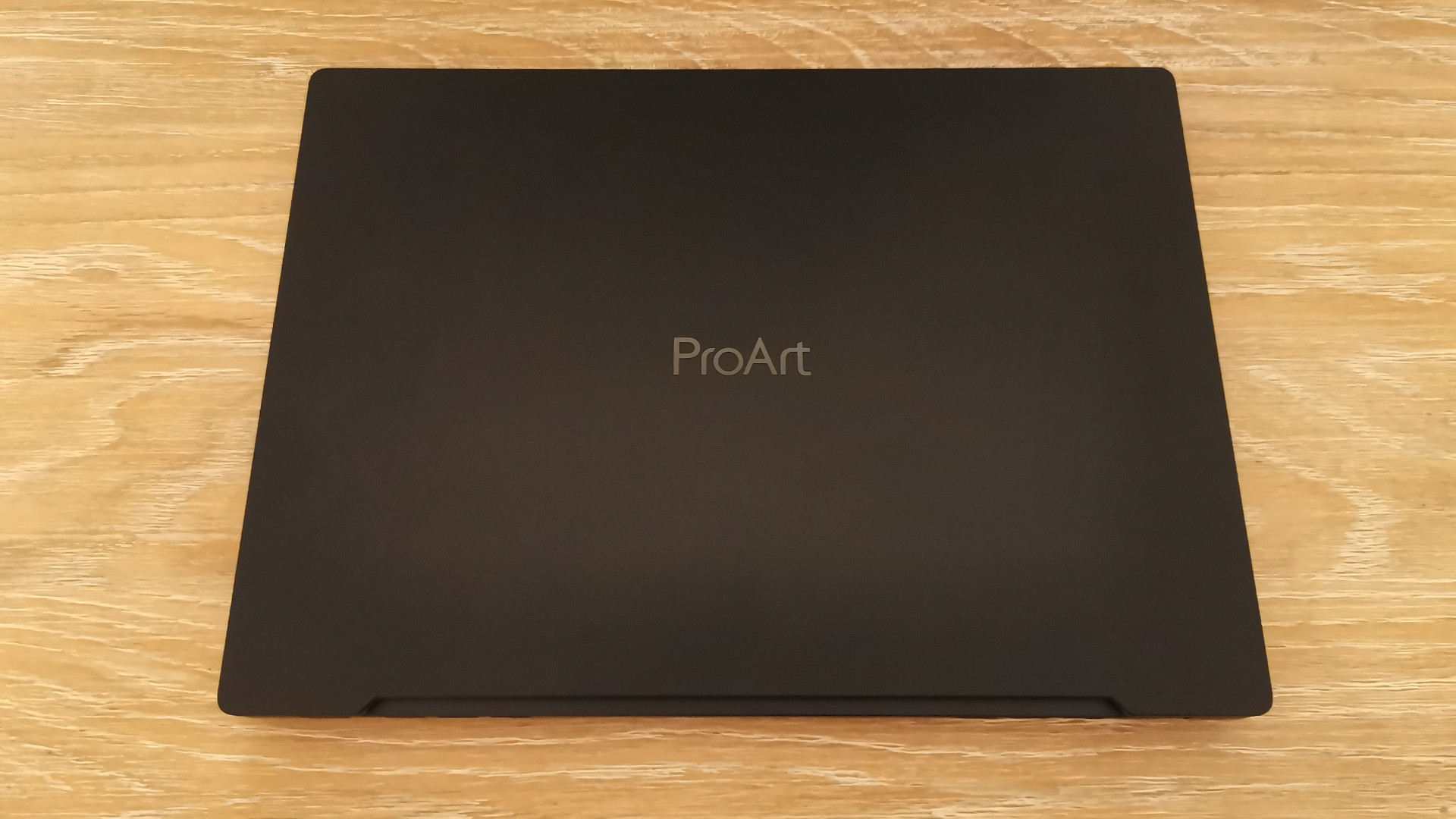
Both pricing and availability are a little spotty, with release dates scattered depending on the specifications you're looking to buy. Our review model features an RTX 3070 graphics card, an AMD Ryzen 9 5900HX processor, and 2TB SSD and 32GB of RAM, but won't be available until December 2021. When it does appear, it'll set you back £2,499.
US pricing for specific models has yet to be confirmed, but it's currently listed as starting from $1,999, which is likely for the lowest specifications that feature an AMD Ryzen 7-5800H, RTX 3060 GPU, 32GB of RAM and a 1TB SSD. As the official UK price for this variant is £1,999, we can also assume that the US price for the fully decked out model we tested will be around $2,499.
This places it in a similar bracket to the recently released MacBook Pro 16-inch (2021) with an M1 Pro SoC, though unless you're devoted the macOS, there's a strong argument that the Asus ProArt Studiobook 16 OLED might be a better deal for creative professionals, especially as you're not getting the full M1 Max silicon unless you spend considerably more cash.
You can also get other OLED creative devices like the Gigabyte Aero 15 OLED with an Intel Core i7-11800H, RTX 3070, 32GB of RAM, 1TB of storage, and a 15.6-inch 4K for £2,199 / $2,099, but this lacks many of the features that make the new ProArt Studiobook 16 so desirable.
Asus ProArt Studiobook 16 OLED review: power and performance
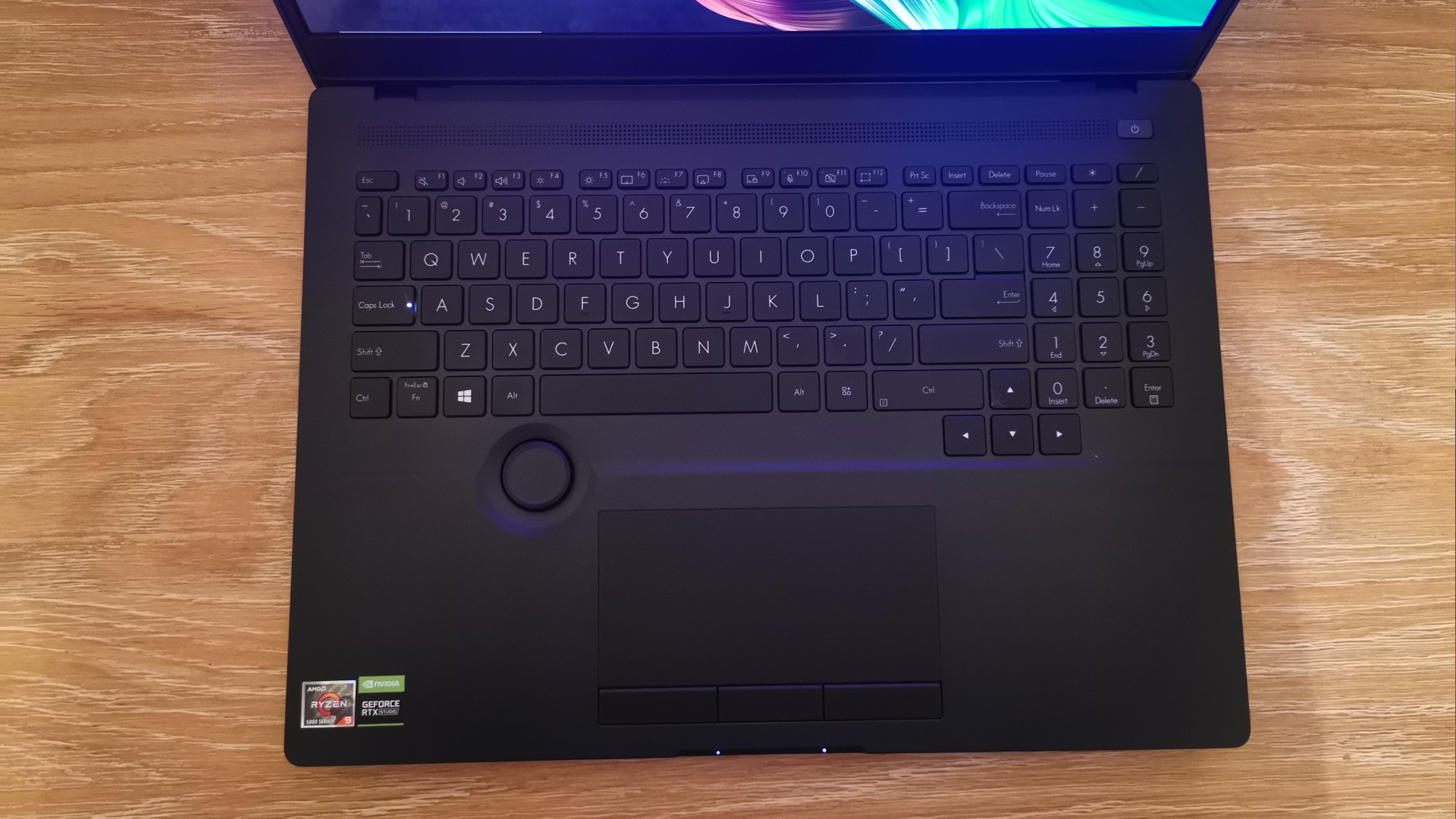
Creative applications are known to be among the most demanding software that a laptop or desktop computer will have to run, but the Asus ProArt Studiobook 16 OLED handled everything we chucked at it like a dream.
The model we’ve reviewed has an AMD Ryzen 9 5900HX processor, which is one of the most powerful CPUs currently available on the market without needing to jump into desktop territory. This eight-core processor is typically seen in high-end gaming devices, which shouldn't come as a surprise as many creative applications (especially 3D ones) share the same hardware demands as a AAA game. If you're looking for processing power, there are very few options that would achieve better results across both benchmarks and real-world performance.
Paired with the RTX 3070 graphics card and 32GB of memory, the ProArt Studiobook 16 OLED ate through every application we tested, with smooth performance across Maya, Blender and Adobe Photoshop. If you wanted to you can even play games on it, and it handled Cyberpunk 2077 just fine with the highest settings thanks to the inclusion of DLSS, which really allows you to push raytracing to its limit.
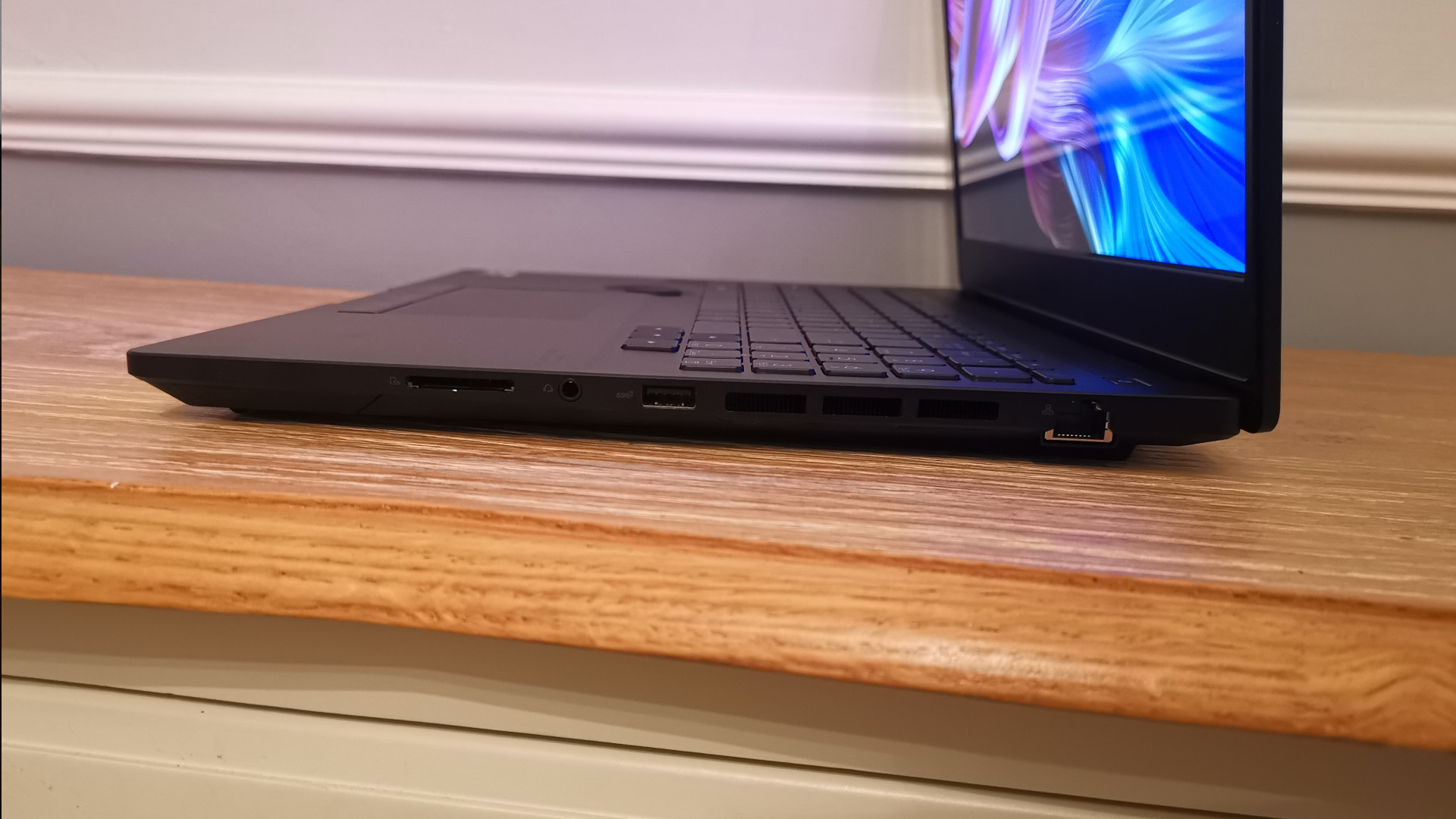
It uses Nvidia Studio drivers to help further optimise applications used by artists and creators to ensure you're getting the most out of your hardware, though you can easily switch between these and Nvidia Game Ready drivers should you want to spend a few days with your Steam account rather than with your head buried in Autodesk.
We ran the ProArt Studiobook 16 OLED through some benchmark tests, where it achieved 48.8FPS (frames per second) in handbrake and 79FPS in Metro Exodus set at Ultra quality. The display is only 60Hz, so you won't be able to physically see any of the additional frames beyond 60, which is one of the few criticisms we had.
We also ran a couple of popular Blender benchmarks, with 'Fishy Cat' coming in with a render time of 1 minute 28 seconds and 'Classroom' rendering in 2 minutes 1 second. Beyond using a desktop PC or a fully specced out MacBook Pro, nothing is coming close to these scores in the mobile workstation market, which makes this a great choice for photo and video editors, 3D artists and graphic designers alike.
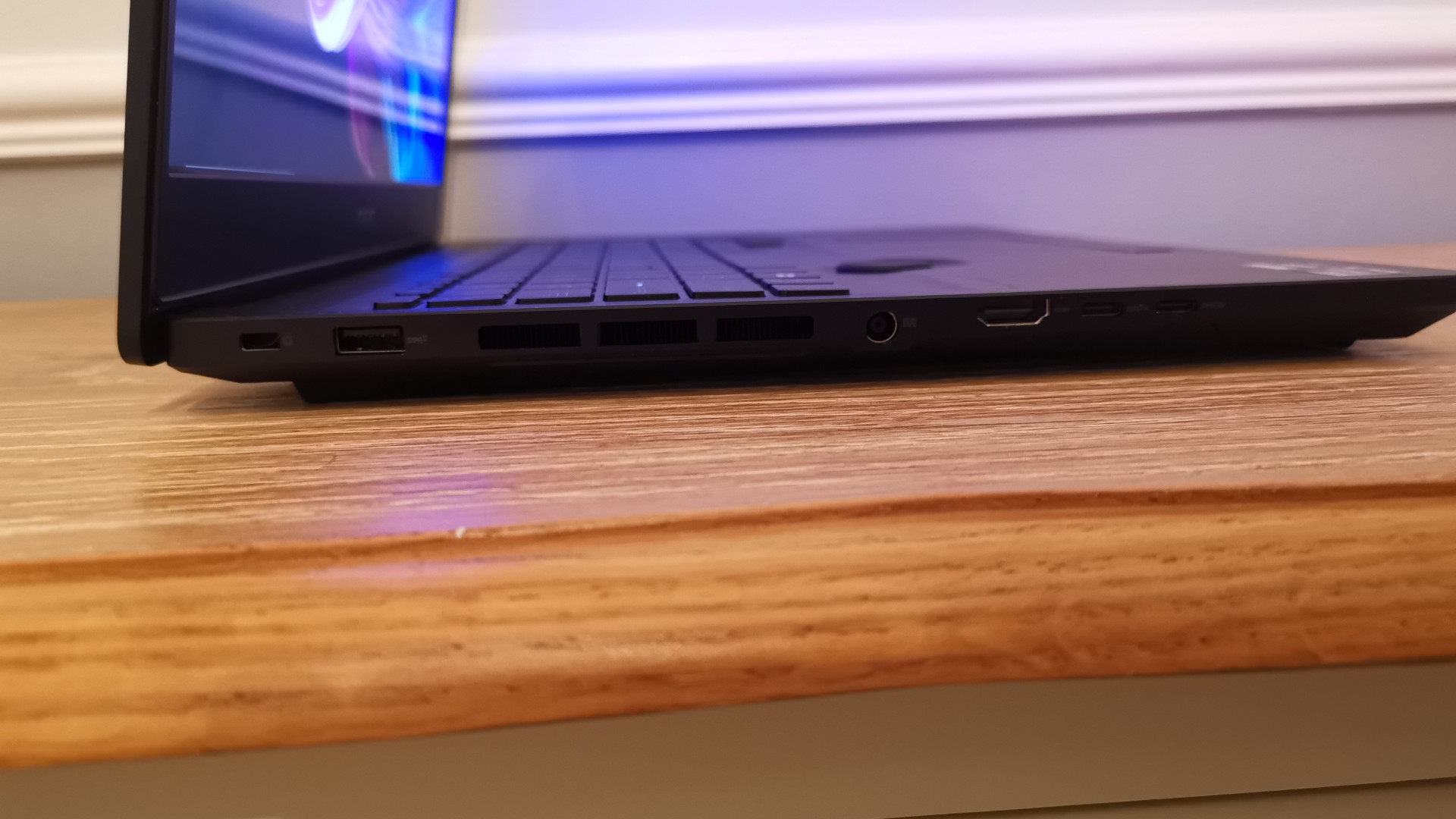
Battery life is where things start to fall down a bit, but only if you didn't go into this with realistic expectations. The Asus ProArt Studiobook 16 OLED managed to trundle on for around 6 hours and 4 minutes in a synthetic PCMark 10 simulation of every day tasks, while we saw an average of 5 hours and 50 minutes from doing various graphics-based tasks.
That might seem low, but the internal components and OLED display are all especially hungry, which makes this an expected run time on battery power alone. Without adding a larger battery to the device and adding to its bulk and weight, it simply isn't possible to extend the battery life while also powering all that demanding hardware.
The included webcam is 720p, which is fine but we’re seeing an increasing amount of 1080p webcams in laptops, and they offer much better detail. Still, it comes with a built-in privacy shutter for anyone who likes to cover their webcam when not in use. The quality is a tad grainy and it's clear that the sensor struggles in low-light environments, but it'll do just fine for work meetings or the occasional family call.
Asus ProArt Studiobook 16 OLED review: display
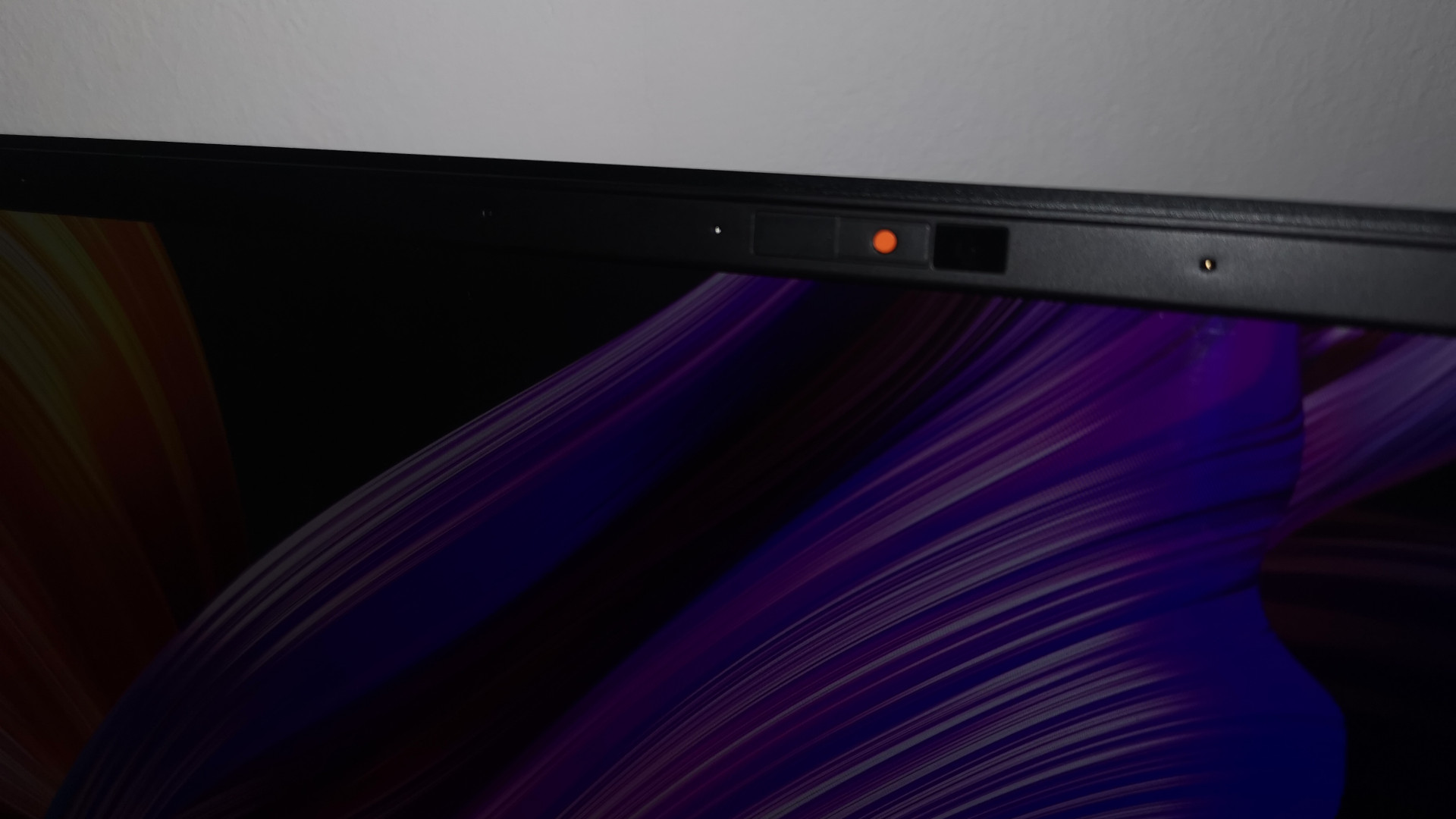
It really is difficult to put into words how beautiful the display is on the Asus ProArt Studiobook 16 OLED, from the darkest blacks and vivid brights. The 4K resolution has 100% DCI-P3 and sRGB colour gamut coverage, as well as 97% AdobeRGB, so you can enjoy strikingly accurate colours on any images and video footage you'll be editing on the device.
It can also achieve around 550 nits of peak brightness, though the 7,000 hour warranty for OLED burn-in is calculated at 200 nits. If burn-in concerns you then put your mind at ease - the device has built-in pixel refreshers and it even ships out with Dark Mode already enabled.
Slap on a typical 4K showcase video and you'll wish you had made the switch to OLED sooner. The richness and depths achievable never failed to blow us away, even after a solid week of using the Asus ProArt Studiobook 16 OLED as a daily driver. The screen is also 16:10, which is quickly becoming a new standard thanks to the boost to productivity that the additional height can bring, giving you more room to work with various applications.
A real cherry on the proverbial cake would have been to bump that 60Hz refresh rate to 120Hz (or even 90Hz). Increasing the refresh rate would result in a noticeable smoothness, but it wouldn't have much application outside of gaming, which the Studiobook isn't optimised for.
Asus ProArt Studiobook 16 OLED review: features
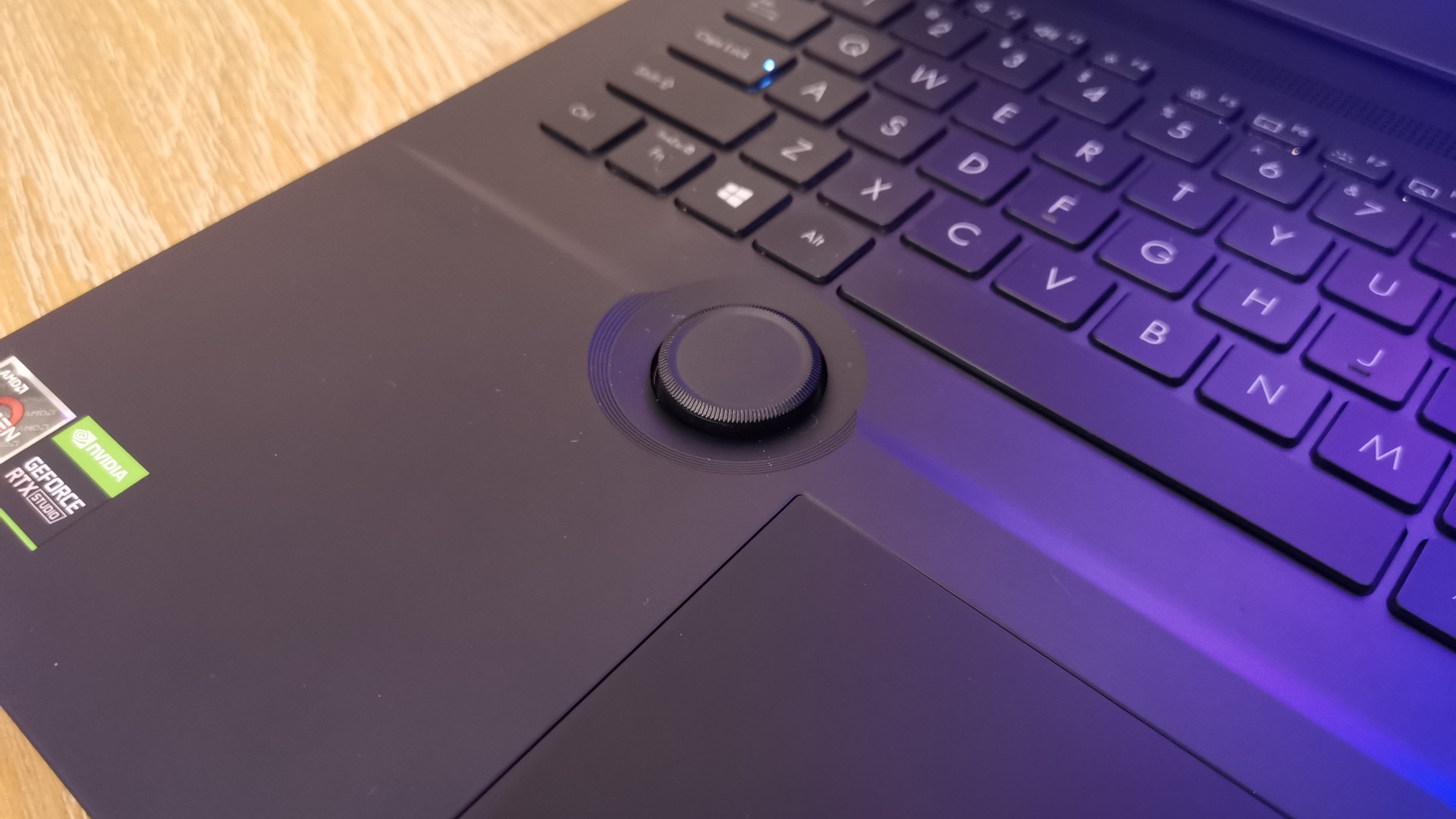
Let's address the big selling point: the Asus Dial is equal parts wonderful and disappointing, but we're hesitant to believe that our feelings will stay that way. Located to the left of the touchpad and embedded into the chassis to avoid being brushed when typing, Its application allows users to quickly change between different tools and controls within certain applications.
Pressing down on the dial will open a menu where you can select screen brightness or audio volume, adjusting your choices by rotating the dial itself. In Adobe Creative Suite applications this feature really shines through, with pre-set menus and actions such as a custom brush options group in Photoshop that contains options for opacity, layers and brush sizes.
If you can get these memorised then using the dial is much quicker than using keyboard shortcuts, and even if you typically save macros or commands to a graphics tablet device, the Asus ProArt Studiobook 16 OLED has another trick up its sleeve.
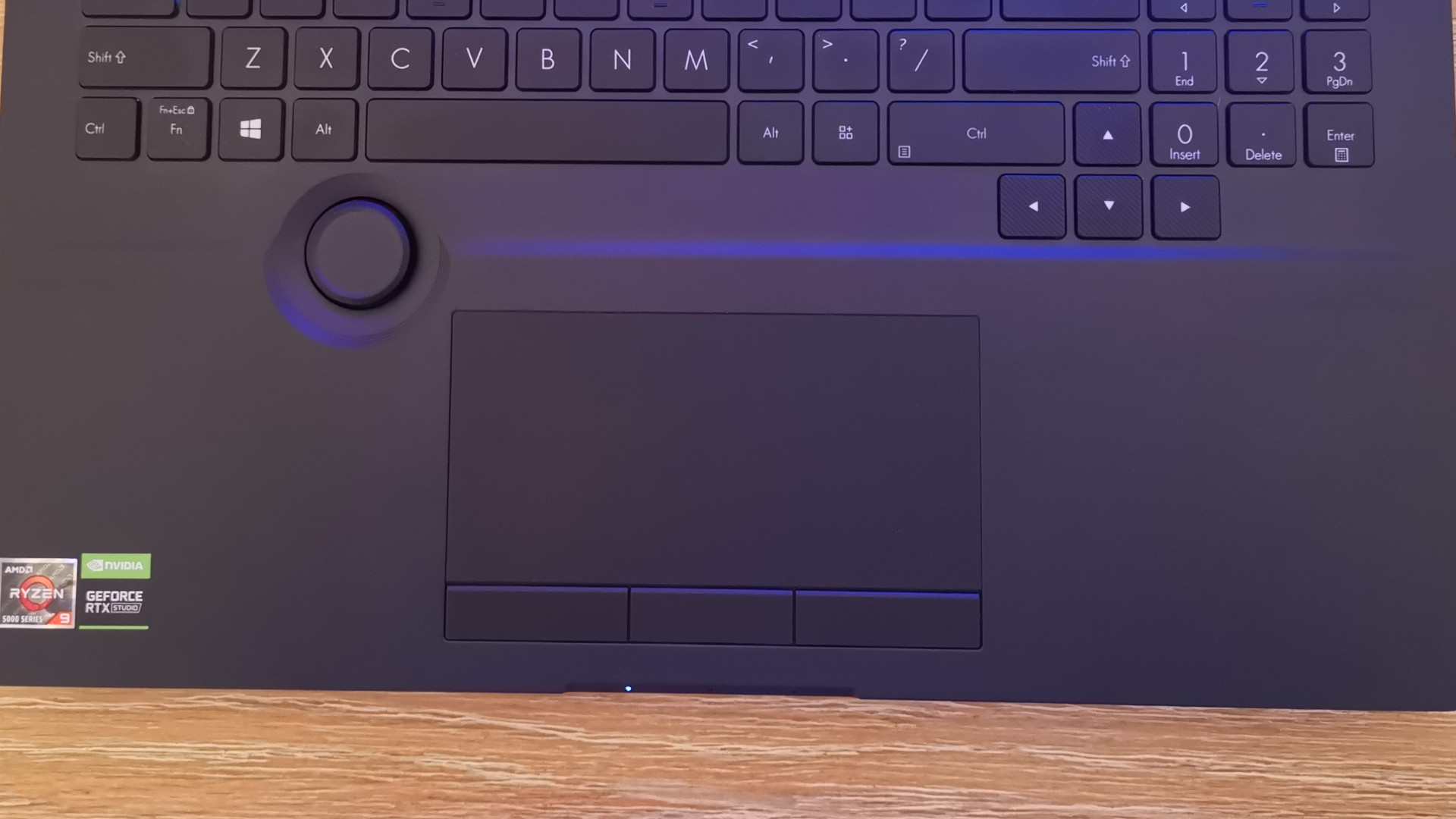
Not only does the touchpad feature a third, central button that acts as a 'hold' function for 3D artists, but it can recognise touch gestures and even be used as a tiny built-in drawing tablet thanks to its ability to be used alongside a stylus. We would comment on how well that works, only the laptop doesn't ship with one, nor does it state exactly what stylus it supports, which is frustrating.
Support is also a huge issue with that innovative dial, as only four Adobe applications can use its functionality at the time of writing: After effects, Photoshop, Premiere Pro and Lightroom Classic.
You can customise the functions in the pre-installed ProArt Creator Hub software, but outside of the four Adobe apps, you can only use the dial to switch between apps and virtual desktops, and scroll up and down. With any luck additional functions will be added for users of other software like Affinity and Divinci Resolve in the future, otherwise this is a huge perk limited only to users of the Adobe creative suite.
If you're concerned about ports, don't be. On the left side of the laptop you're getting two USB-C 3.2 gen 2 (or a single USB-C and a Thunderbolt 4 if you opt for an Intel model), a USB-A input, an HDMI port, a lock slot, and an AC adapter for charging, while on the right you'll find an SD card slot, a USB Type-A, a standard headphone jack and an ethernet port. This is plenty enough to plug in all the additional peripherals and displays you might need, and until very recently, was more than the MacBook Pro was offering up.
Should you buy the Asus ProArt Studiobook 16 OLED?
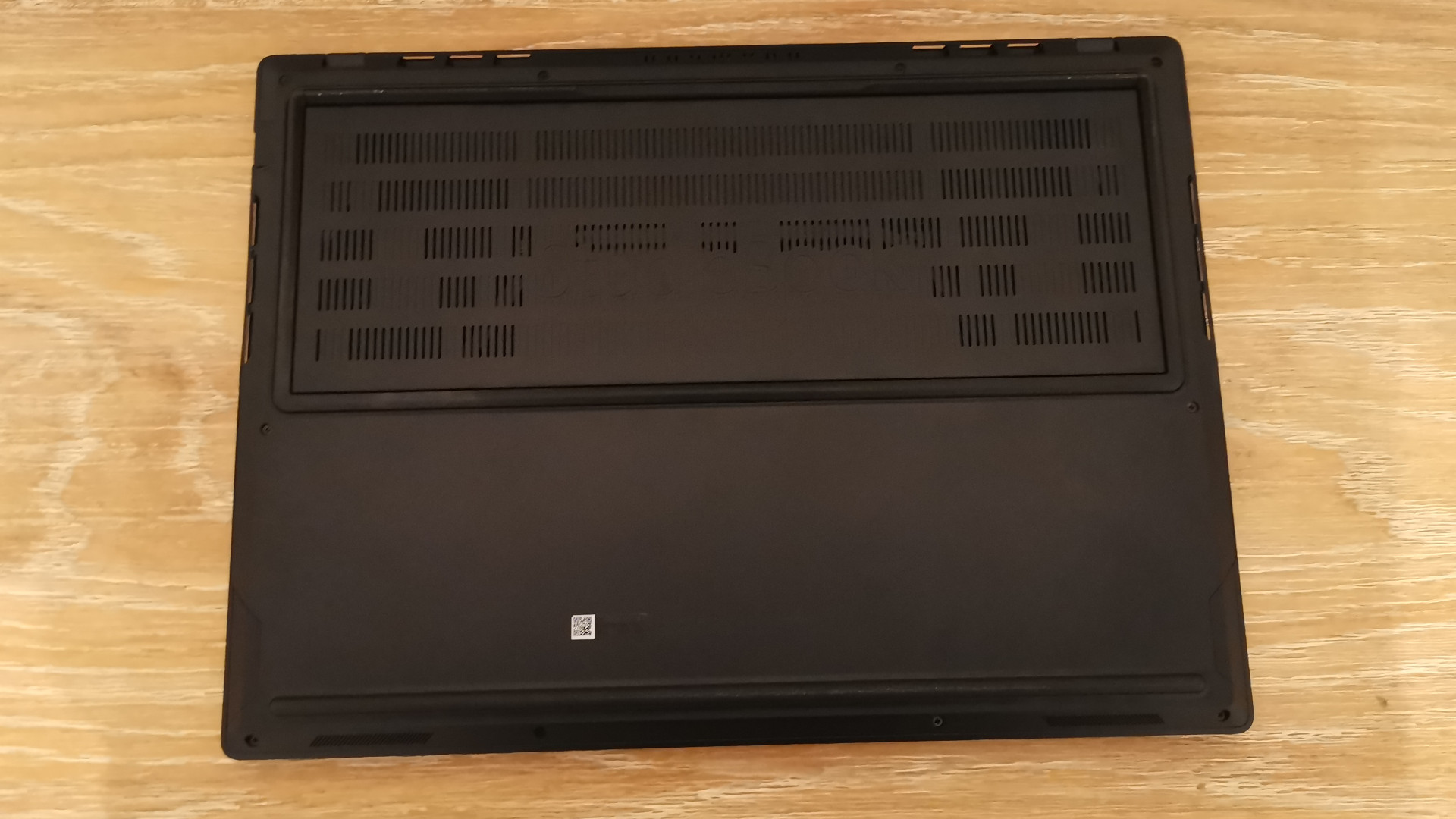
If you're looking for the ultimate portable workstation for creatives then you've found it (though as we've said, the MacBook Pro 14 (2021) and the MacBook Pro 16 (2021) are both up there too). While the Asus dial might lack support for other applications outside of the Adobe creative suite for now, there's nothing to say it won't be added in the future, especially given the laptop hasn't actually been officially released yet. As it stands, the current functionality covers four of the most commonly used creative applications so even if it's restrictive, chances are you use at least one of them.
The price is also subjective. It's high yes, but there are more expensive laptops on the market that don't meet the creative optimisations and features of the Asus ProArt Studiobook 16 OLED (we're looking at you Apple), and while the asking price is steep, you really are paying for what you get, so it's by no means an unreasonable price tag.
The Asus ProArt Studiobook 16 OLED is for industry professionals or students with some cash to spare who are looking for a condensed desktop workstation rather than some slim, lightweight ultrabook, and given its near-desktop level of performance, it certainly fits the bill. If you can get your hands on one, we doubt you'll be disappointed.
Related article:

Thank you for reading 5 articles this month* Join now for unlimited access
Enjoy your first month for just £1 / $1 / €1
*Read 5 free articles per month without a subscription

Join now for unlimited access
Try first month for just £1 / $1 / €1
out of 10
The Asus ProArt Studiobook 16 OLED is one of the best portable workstations for creative professionals, breaking away from the boring, traditional designs to provide genuinely useful and innovative solutions to streamline your experience using the device.

Jess is news writer at The Verge. She was previously TechRadar's computing writer, covering hardware, PC gaming and peripherals, though she can be found freelancing for creative tech like 3D printers and graphics drawing tablets. She also likes to dabble in digital art and can often be found playing games of both the PC and Tabletop variety, occasionally streaming on Twitch to the disappointment of everyone.

